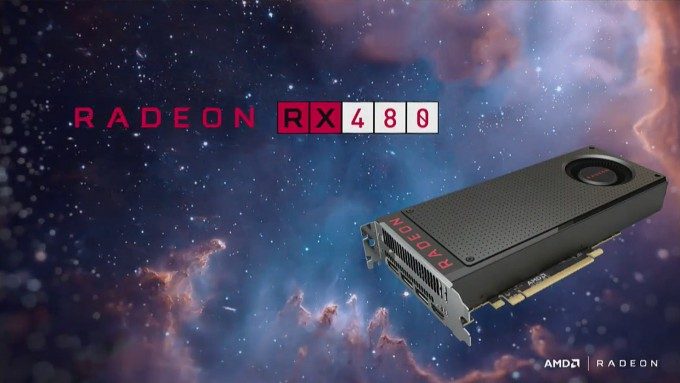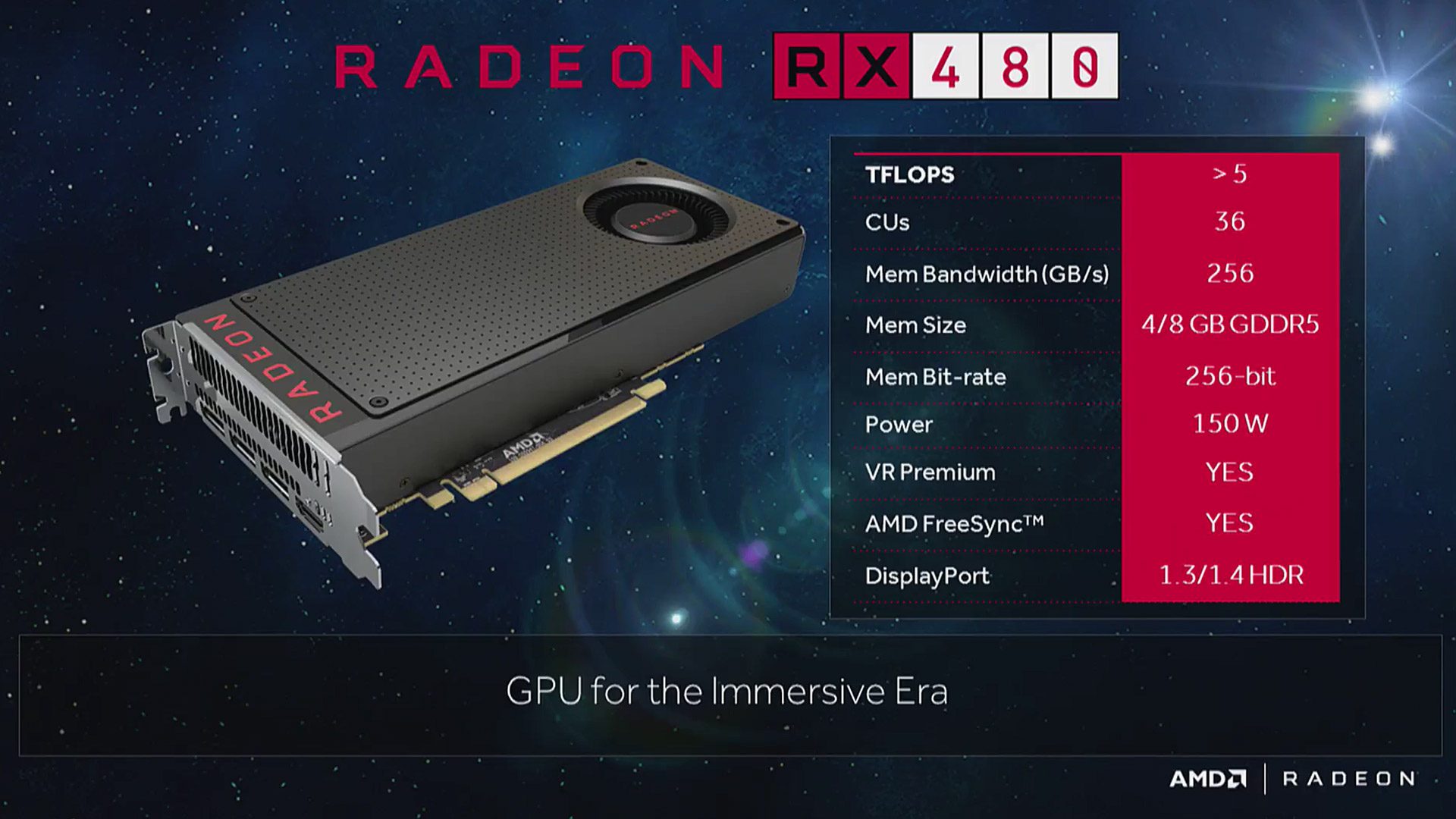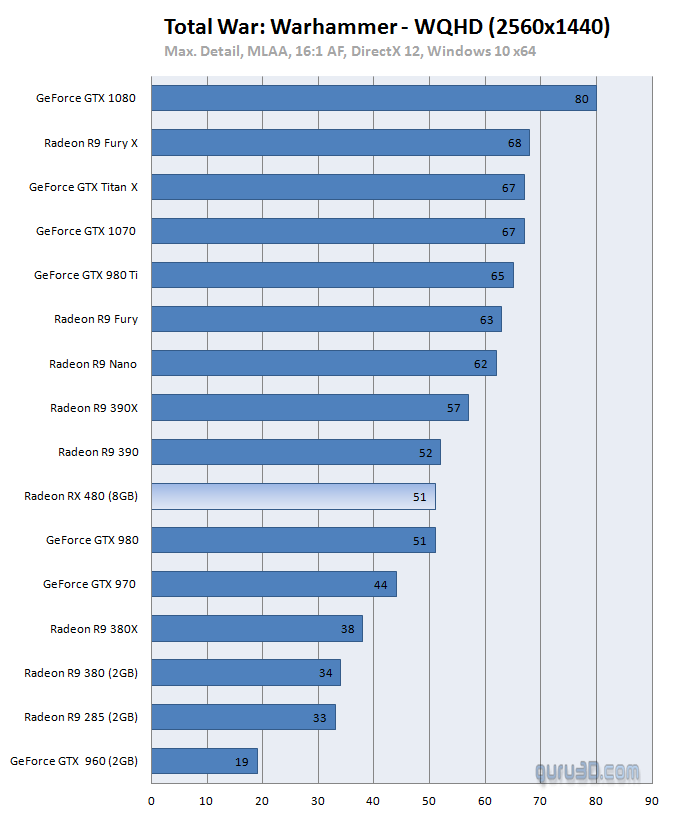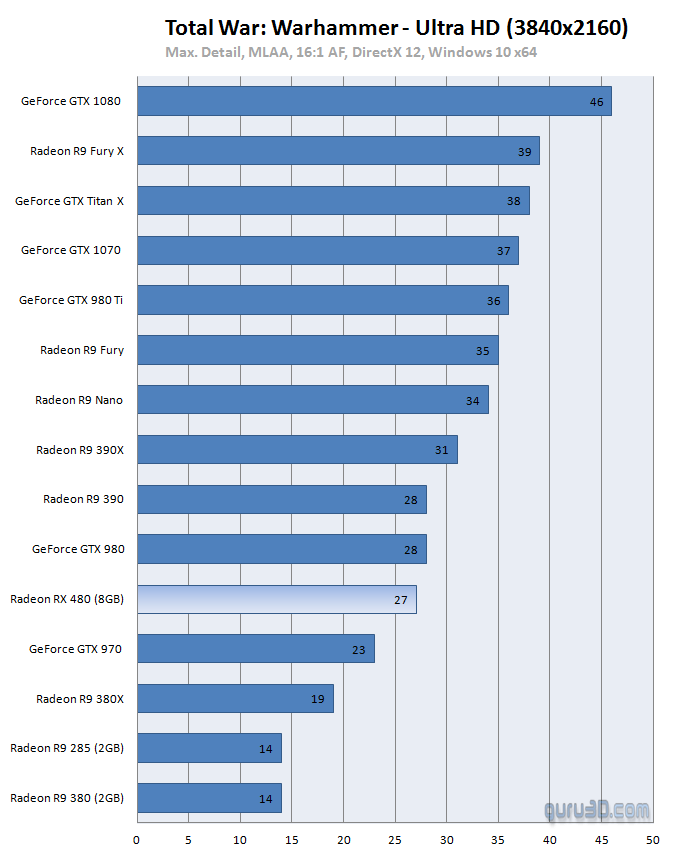AMD today launched the Radeon RX 480, the company’s budget-friendly GPU that promises to lower the barrier of entry into virtual reality. And while VR still isn’t exactly what you’d call cheap, budget-conscious consumers looking to upgrade their old gaming rigs or build new, VR-ready rigs should definitely take notice.
Touted as the cheapest VR-ready graphics solution to date, the new Radeon RX 480 was made available today in 4GB ($199) and 8GB models ($239) across the web.
And what can the new budget card do? With a single RX 480 surpassing both HTC Vive and Oculus Rift’s recommended minimum specs—AMD’s R9 290 and NVIDIA’s GTX 970—AMD’s new 14nm Polaris GPU is even said to beat the mighty GTX 1080 ($699) when doubled-up into CrossFire mode; and that’s clear under $500 for two 8GB models.
In a test conducted by Guru3D using several resolutions across the game Total War: Warhammer, a single Radeon RX 480 (8GB) rates consistently between the GTX 970 and 980, but tends to stick closer to the 980. While we haven’t seen real world comparisons of both 4GB and 8GB models placed side-by-side, AMD maintains that the 4GB RX 480 is assuredly Oculus Rift and Steam VR-ready.
AMD’s Senior Vice President Raja Koduri said at the announcement of the card last month that the new budget-friendly GPU is “based on what the content developers are going to tune for over the next 3-4 years.” If that holds true, the card should be a viable option for at very least the first wave of consumer VR headsets.
And what about older cards? At the time of this writing, a R9 290 can be had for $235, while a GTX 970 for $265. Prices are sure to drop, along with it a rush of second-hand cards to hit Ebay, but the price-performance ratio of a new RX 480 simply can’t be denied.
But if you’re the sort of person who’s really strapped for cash, you might want to sit on your nearly maxed-out Visa card for a little while longer though. Nvidia still hasn’t unveiled their GTX 1060 yet, which is rumored to take place during the company’s GTX 10-Series Celebration on July 7th, so there’s no telling how competitive Nvidia will position their lower-priced high-end GPU.
Stacking Up Against the Recommended Minimum
| AMD Radeon RX 480 (8GB) | AMD Radeon RX 480 (4GB) | NVIDIA GTX 970 | AMD Radeon R9 290 | |
| Stream Processors | 2304 | 2304 | 2560 | 2560 |
| Texture Units | 144 | 144 | 109 | 160 |
| ROPs | 32 | 32 | 64 | 64 |
| Base Clock | 1120MHz | 1120MHz | 1050MHz | 947MHz |
| Memory Clock | 7-8 Gbps GDDR5 | 7Gbps GDDR5 | 7Gbps GDDR5 | 5Gbps GDDR5 |
| Memory Bus Width | 256-bit | 256-bit | 256-bit | 512-bit |
| VRAM | 8GB | 4GB | 4GB | 4GB |
| Typical Board Power | 150W | 150W | 145W | 300W |
| Processor Size | 14 nm | 14nm | 20nm | 28nm |
| GPU | Polaris 10 | Polaris 10 | Maxwell | Hawaii |
| Launch Date | 06/29/16 | 06/29/16 | 09/18/14 | 11/05/13 |
| Launch Price | $239 | $199 | $329 | $399 |
*information sourced from AnandTech.com





